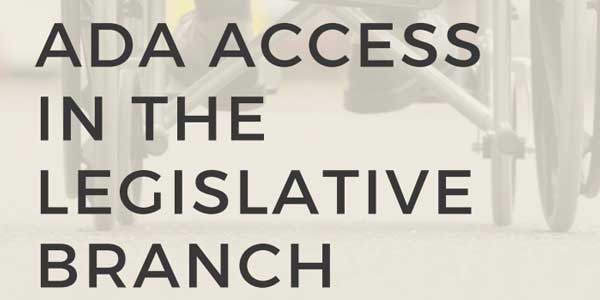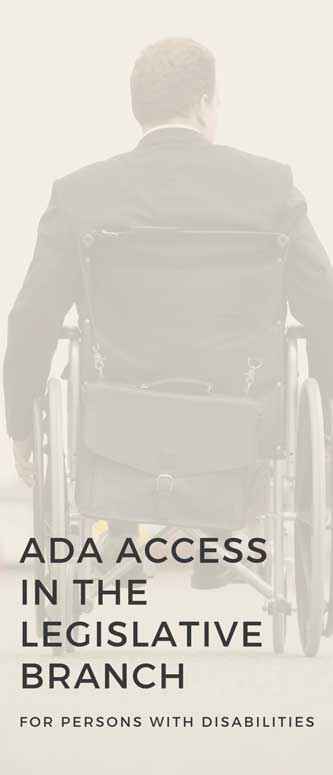ACCESS
Under the Congressional Accountability Act of 1995, legislative branch offices are required to comply with the public access provisions of Titles II and III of the Americans with Disabilities Act of 1990 (ADA). This means that legislative branch public services and accommodations, including the facilities where such services are provided, must be accessible to persons with disabilities. The CAA also applies the ADA Title I employment provisions prohibiting discrimination in personnel actions to the legislative branch.
Who Is Covered And Who Must Comply With The Ada Access Provisions?
Under the CAA, the ADA provides protections to anyone who receives public services or accommodations from the following legislative branch offices;
Each office of the House of Representatives and the Senate (including all offices of Members of Congress, district and state offices, committees, and joint committees);
Capitol Police;
Congressional Budget Office;
Office of the Architect of the Capitol (including Botanic Garden);
Office of the Attending Physician;
Office of Congressional Workplace Rights;
Office of Technology Assessment;
Library of Congress, ; John C. Stennis Center for Public Service Training and Development;
China Review Commission;
Congressional-Executive China Commission;
and Helsinki Commission
What Does Guaranteed Access Mean?
While the access provisions of the ADA can sometimes be confusing, understanding a few basic concepts can help. Here are some key ADA principles of access:
Access means non-discriminatory eligibility. A person with a disability cannot be deemed ineligible for a program or service because of their disability. For example, if an office usually provides a service to constituents, that service cannot be denied to a constituent with a disability because of that disability.
Access means effective communication. Communication with a person with a communication impairment (such as limited hearing, seeing, or speaking abilities) must be equally effective as communication with a person without a disability. This may require that covered offices provide an auxiliary aid or service when needed to communicate effectively with an individual with a communication disability. For example, furnishing in-person constituent services to a deaf person whose principal language is American Sign Language (ASL) may require that an ASL interpreter be provided to facilitate face-to-face communication.

